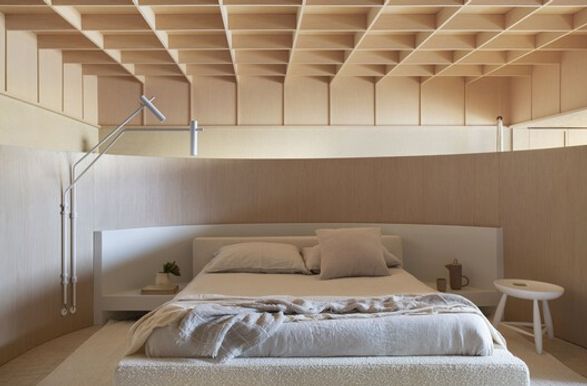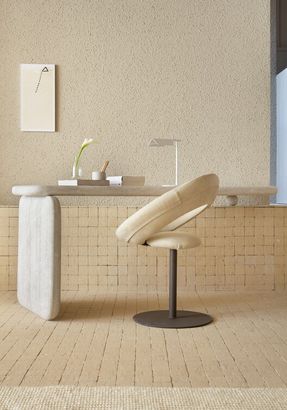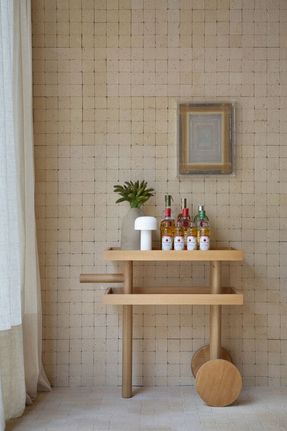Olaria House
ARCHITECTS
NJ+ Arquitetos Associados
ARCHITECTS IN CHARGE
Nildo José, Virginia Lopes, Danielle Groszmann
MANUFACTURERS
+55 Design, Atelier Balaio, Beatriz Dutra Cerâmica, Bontempo, Construflama, Coral Tintas, Cristina Palma Cerâmica, Deca, Dom Daqui Tapetes, Dpot, Etel, Galeria Casa Triângulo, Galeria Lume, Galeria Millan, Galeria Nara Roesler, Galeria Raquel Arnaud, Galeria Teo, Hanna Englund Ceramics, Herança Cultural, Jocal Estofados, +12
PROJECT TEAM
Marcelo Rizzo, Anna Clara Matar, Alvaro Ajej, Diego Guido, João Oliveira, Thais Pureza e Virgínia Mattos
COLLABORATORS
Amauri e Simone Gonçalves, Andrea Oliveira, Bia Abreu e Arthur Neves, Calebe Rocha e João Santos, Camilla, Etel e Lissa Carmona, Eduardo Von Haehling, Francisco Milhomens, Gisele Passos, Guilherme Wentz e Fernanda Pimentel, Guita Rutman, Ludmila Lepri, Magali Santana, Rafael Marinelli e Ronaldo Argibay, Sandra Telles, Vanessa e José Basile
PHOTOGRAPHS
Denilson Machado – MCA Estúdio
AREA
215 m²
YEAR
2021
LOCATION
São Paulo, Brazil
CATEGORY
House Interiors
In its fourth participation at CASACOR SP, one of the largest exhibitions of architecture, interior design, and landscaping in the Americas, NJ+ architects present the project of a complete residence, with 200 m² (125 m² of house and 75 m² of garden).
Honoring Brazilian ceramics, highlighting the heritage of the country's ancient potteries and the importance of handcrafted work in architecture. The event, which will be held from September 21st to November 15th at Parque Mirante, an annex of Allianz Parque, has the theme 'The Original House'.
The space named Casa Olaria NJ+ is premised on the importance of moments of introspection and seclusion, so the bedroom is subtly separated from the other rooms through an inviting cylindrical volume present in the center of the living room, inspired by a volume by the Belgian architect Juliaan Lamps.
The space invests in organic shapes, which refer to the handcrafted works of Brazilian ceramists, and geometric shapes, and is characterized by a comfortable and minimalist aesthetic,where the Legno Nórdico finishes, by Bontempo - a partner of the space -, applied to the ceiling recall the ribbed slabs of Brazilian modernism rethought, giving a feeling of coziness.
The Bontempo ceiling also refers to the roofs of traditional potteries and stands out in an organic-shaped living room, which also has a corten bookcase and a curatorship of ceramics by various artists in the country.
The brand's panels, specialized in materializing the uniqueness and personality of each project, provide the geometric and comfortable air chosen to cover the upper part of the room by forming squares that border the ceiling.
Alongside the wood, the rounded shapes of the upholstery, bookcase, mirrors, and other furniture items, and the neutral color palette chosen for the environment, make up the space's contemporary minimalist aspect.
Natural materials are widely explored in the dining room, home office, kitchen, and suite with bathroom.
Upon entering the suite, walking along a ramp, the neutral and minimalist environment, on another level, has a cozy, light atmosphere and highlights the bed designed by the office especially for the exhibition.
Next to it, the bathroom with volumetry and neutral tones compose the sophisticated and discreet look, as well as all the other rooms.
In the external area, the organic pocket of Bia Abreu's landscaping is composed of beams, the effect of light and shadow, and the water mirror also designed by the office.
In furniture, Brazilian design stands out through the pieces carefully chosen for the exhibition, such as the Guanabara dining table and the Ipanema and Manhattan armchairs, all by Jorge Zalszupin.
The Mocho bench by Sergio Rodrigues and the Max Chair by Arthur Casas Design is still in the room. Designer Guilherme Wentz presents the sofa, launched in space.
Other design names are also present: Lina Bo Bardi, Ricardo Fasanello, Adalfan Filho and Shane Schneck.
Coffee tables, side tables, benches, and some parts of the space are signed by the office itself, such as the Cabaça armchair.
The most important works of art in the environment are by Mira Schendel, Célia Euvaldo, Zanini De Zanine, Carlos Nunes, Georgia Kyriakakis, Sergio Sister, Rodrigo Andrade, Gabriella Garcia and Ana Vitória Mussi.
In the ceramics collection, we have pieces produced by Dona Rita, a resident of the village of Campo Alegre and one of the oldest artisans working in Vale do Jequitinhonha.
In addition to other names such as Nado, Hanna Englund, Nicia Braga, Denise Stewart, Gilberto Gomes, Alice Aroeira, Studio Nun, Mila & Romi, Frida do not bark, Jamila Cruzado, Noni, Beatriz Dutra and Cristina Palma Lopes.



































